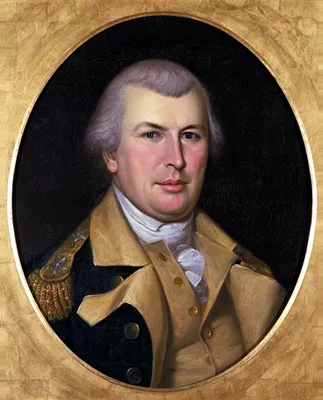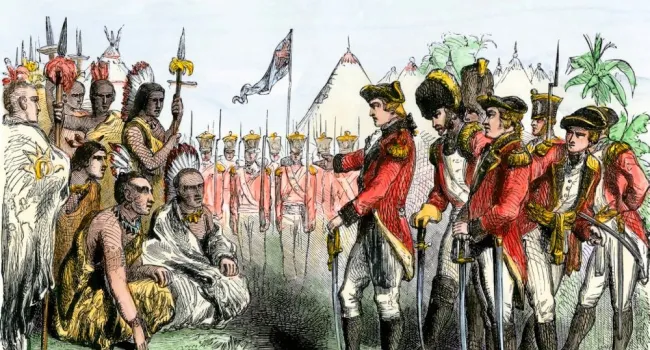
Even though General Nathaniel Greene's army suffered a defeat at the hands of General Cornwallis at the Battle of Guilford Courthouse, Greene's army was largely still intact. Cornwallis moved his army to Wilmington, North Carolina, and Gen. Greene took advantage of this move by marching his forces into South Carolina, to begin the process of driving out the British.
On May 22, 1781, Greene began siege operations against the British "Star Fort" in Ninety Six. The Siege of Ninety Six was the longest siege during the war, lasting 28 days. With a failed assault by Greene's forces, and with British reinforcements on the way, Greene ordered a retreat and headed back to Charlotte, North Carolina. Ninety Six was a victory for the British.
en Espanol
A pesar de que el ejército del General Nathaniel Greene sufrió una derrota a manos del General Cornwallis en el Palacio de Justicia de la Batalla de Guilford, el ejército de Greene estaba en gran parte intacto. Cornwallis traslado su ejército a Wilmington, Carolina del Norte, y el General Greene aprovecho este movimiento para hacer marchar a sus fuerzas hacia Carolina del Sur, para comenzar el proceso de expulsión a los británicos.
El 22 de mayo de 1781, Greene comenzó operaciones de bloqueo contra el “Star Fort” británico en Ninety Six. El asedio de Noventa Six fue el bloqueo más largo durante la guerra, durando 28 días. Con un asalto fallido de las fuerzas de Greene y con refuerzos británicos en camino, Greene ordeno un retiro y se dirigió de regreso a Charlotte, Carolina del Norte. Ninety Six fue una victoria para los británicos.
Standards
- 4.2.CX Contextualize South Carolina’s role in the development of the new nation.
- 8.2.CE Explain the economic, political, and social factors surrounding the American Revolution.
- This indicator was developed to encourage inquiry into how the colonies began to unify to create a distinctive American identity over the course of events of the American Revolution.
- 8.2.CX Contextualize the roles of various groups of South Carolinians as the colonies moved toward becoming an independent nation.
- This indicator was developed to encourage inquiry into the motivations of colonists during the American Revolution and the progression of conflict and failed compromise that ultimately led to revolution.
Resources
You need to be logged in to listen to view this content. Create an account now; it's quick, easy, and free!
Log In to View





